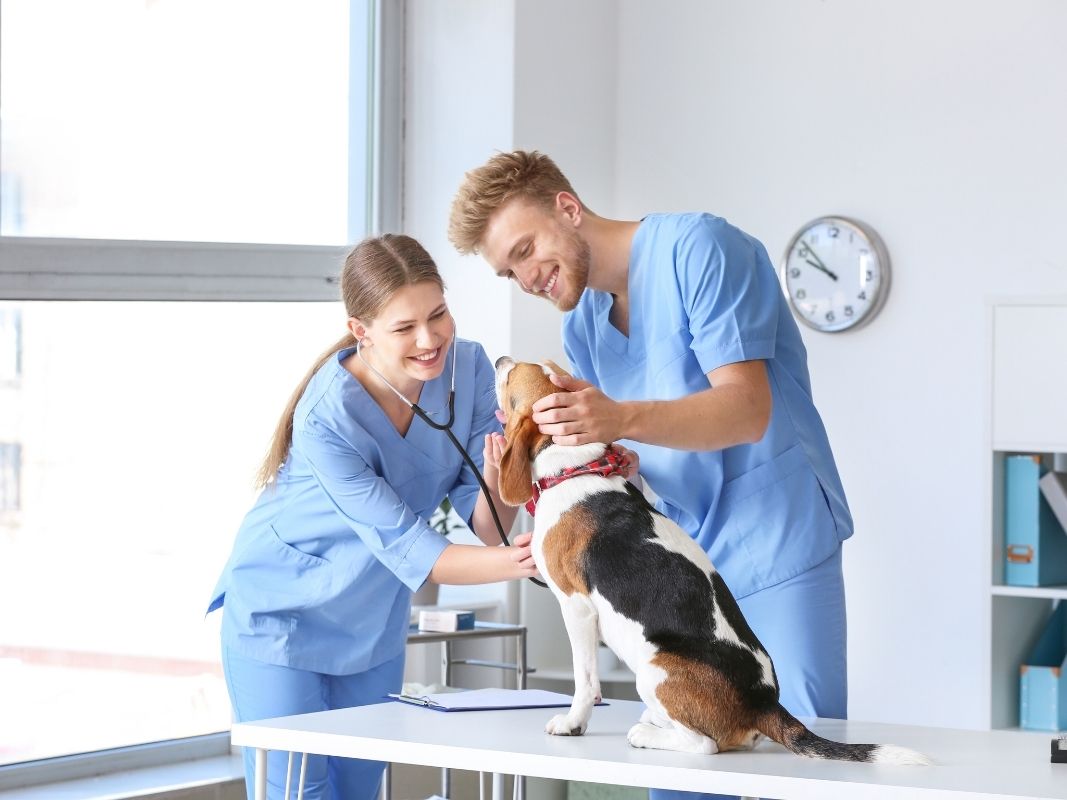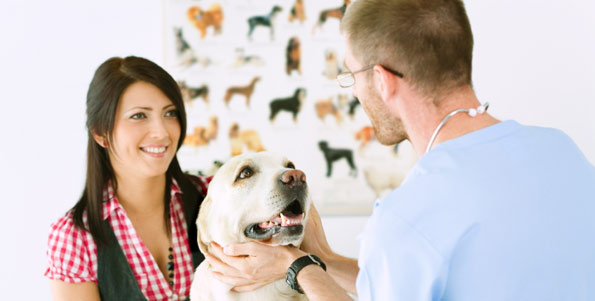Complete Breakdown of Services at animal emergency care bellingham Clinics
Complete Breakdown of Services at animal emergency care bellingham Clinics
Blog Article
Everything About Vet Surgical Treatment: Recognizing the Importance of Expert Look After Your Family pets
Vet surgical procedure is an essential component of family pet health care. It incorporates various procedures, from regular optional surgeries to urgent interventions. Understanding the complexities of these surgeries can assist pet proprietors make informed choices. The preparation, execution, and recuperation phases are important for making sure the wellness of pets. With correct expertise, owners can browse the complexities of veterinary treatment. What factors should be considered before a pet undertakes surgery?
Types of Veterinarian Surgeries
When a pet dog requires surgical treatment, recognizing the numerous kinds of veterinarian surgeries can aid pet dog proprietors make informed choices. Vet surgical treatments can be generally classified into three main kinds: optional, urgent, and emergency situation surgeries. Elective surgeries, such as spaying or neutering, are intended treatments that are not promptly dangerous. Urgent surgical procedures, like those for foreign body elimination, have to be done soon but are not lethal in the minute. Emergency situation surgeries, such as those dealing with serious injury or interior bleeding, are important and require instant attention.Additionally, surgeries can vary in complexity, varying from minimally invasive laparoscopic treatments to a lot more comprehensive open surgical procedures. Each type of surgical procedure brings its very own risks and recuperation processes. Understanding these classifications allows animal owners to take part in meaningful conversations with vets, bring about much better end results for their precious pets.
Getting ready for Your Animal's Surgical procedure
Planning for an animal's surgical treatment includes a complete checklist to guarantee all basics are covered. Efficient interaction with the veterinarian is important for understanding the procedure and any kind of required pre-operative actions - tplo surgery. In addition, having clear post-operative care instructions will help owners offer the most effective support for their recouping family pets
Pre-Surgery Checklist Fundamentals
Guaranteeing a smooth surgical experience for an animal needs cautious prep work and interest to detail. A pre-surgery checklist is vital for family pet owners to comply with. Verifying the scheduled surgical procedure day and time is vital. Owners need to additionally validate that their animal has not eaten according to the vet's instructions, normally for 8-12 hours before surgical procedure. Gathering required clinical documents, including inoculation background, is necessary for the veterinarian's review. It is additionally suggested to prepare a comfy area in the house for the animal's recuperation after surgical treatment. Owners must have a strategy for transportation to and from the vet center, making certain that the animal is protected and comfortable throughout the journey. Following these steps can substantially boost the surgical experience.
Communicating With Your Vet

Efficient communication with the vet is vital for a successful medical experience for pets. Owners must be prepared to review their pet dog's case history, consisting of any kind of pre-existing conditions, drugs, and allergic reactions. This info aids the vet assess risks and tailor the medical strategy as necessary. Additionally, pet dog owners should ask inquiries relating to the procedure, anesthesia, and expected results to ensure they completely recognize the procedure. Making clear any questions can ease anxiousness for both the pet and the owner. It is likewise essential to interact any kind of behavioral changes or concerns observed in the animal leading up to the surgical procedure. Inevitably, clear discussion promotes depend on and cooperation, making sure that animals get the very best possible care throughout their surgical trip.
Post-Operative Care Recommendations
After discussing the medical procedure with the vet, pet dog owners should concentrate on post-operative care instructions to facilitate a smooth recuperation for their pets. These instructions generally consist of keeping track of the surgical site for indications of infection, such as inflammation or discharge. Animals might require to be kept one's cool and restricted to stop extreme movement that can interfere with healing. Pain administration is important, so owners should comply with the vet's guidance on carrying out medications. In addition, nutritional constraints may be suggested to prevent intestinal trouble. Routine follow-up consultations are very important to ensure appropriate recovery and deal with any kind of concerns. By adhering to these post-operative care directions, pet dog proprietors can considerably add to their animal's recuperation and overall well-being.
The Surgical Process Explained
The surgical procedure for pets incorporates essential actions that assure their safety and recovery. Pre-surgery preparations are important for decreasing risks, while post-operative treatment standards play an important duty in promoting healing. Understanding these elements helps animal owners browse the medical experience much more successfully.
Pre-Surgery Preparations
Prior to a pet dog undergoes surgery, a number of vital preparations need to happen to ensure a risk-free and successful procedure. Initially, a thorough vet assessment is necessary to evaluate the family pet's overall health and identify any type of prospective risks. This might consist of blood tests, imaging, or various other diagnostics. The vet will also review anesthesia choices customized to the animal's certain demands. Additionally, animal proprietors are generally instructed to hold back food and water for a defined time prior to surgical treatment to lessen the risk of problems during anesthetic. It is necessary for owners to provide a complete medical history, consisting of any medicines or allergies, making certain the surgical team has all Continued needed information. Appropriate interaction and adherence to pre-surgery guidelines can greatly improve the outcome of the treatment.
Post-Operative Care Guidelines
Appropriate post-operative care is important for ensuring a pet dog's recovery adhering to surgery. After the treatment, family pets need to be checked closely for any signs of problems, such as extreme bleeding, swelling, or uncommon habits. It is very important to adhere to the veterinarian's directions relating to drugs, consisting of pain reducers and antibiotics. Pets need to be kept in a silent, comfortable atmosphere to minimize stress and advertise recovery. Limiting activity is crucial; short, leashed strolls might be necessary, yet leaping or running should be stayed clear of. Regular follow-up appointments must be set up to examine the healing process. Additionally, the medical website has to be kept tidy and completely dry, with any kind of signs of infection reported to a veterinarian immediately. Sticking to these standards boosts healing end results.
Anesthesia and Discomfort Administration
Efficient anesthesia and discomfort administration are essential components of vet surgical treatment, making sure that family pets remain comfy and safe throughout the procedure. Vets evaluate each pet dog's specific demands, taking into consideration variables such as age, weight, wellness standing, and the sort of surgical procedure being performed.Anesthesia methods generally include a mix of pre-anesthetic medications, induction representatives, and inhalant anesthetics, enabling specific control over the pet's degree of consciousness. Surveillance throughout surgical treatment is essential; veterinarians continually observe vital signs to deal with any possible issues promptly.Pain management techniques may entail opioids, non-steroidal anti-inflammatory drugs (NSAIDs), and anesthetics, customized to the pet dog's particular scenario. This diverse technique assists minimize discomfort and advertises a smoother surgical experience. By prioritizing reliable anesthetic and pain administration, vet professionals boost the overall welfare of family pets undertaking operations, ensuring they obtain the highest criterion of care.
Post-Operative Treatment and Recuperation
Adhering to surgery, the focus shifts to post-operative care and recuperation, which is vital for guaranteeing a pet's secure go back to normal activities. During this period, animals call for a peaceful, comfy environment to aid healing. Proprietors need to closely check their pet dogs for any signs of discomfort or uncommon behavior.Veterinary standards often consist of details instructions connected to medication administration, injury treatment, and nutritional adjustments. It is crucial to comply with these recommendations to minimize difficulties and promote healing. Animals may require to be restricted from vigorous activities, such as running or jumping, during their recovery period (veterinary cardiologist near me).Regular follow-up appointments with the vet enable for monitoring of the animal's development and prompt adjustments to the care strategy. Giving emotional support and companionship can likewise enhance a pet's healing experience, aiding to ease anxiety and stress and anxiety. Overall, thorough post-operative treatment plays a considerable function in attaining an effective recuperation
Identifying Issues After Surgery
How can pet dog proprietors identify problems after surgery? Awareness of details signs is vital for making sure the well-being of pets throughout healing. Common indications consist of too much swelling, redness, or discharge at the medical website, which might indicate infection. In addition, relentless pain, shown hospital for dogs by whimpering or reluctance to move, must trigger immediate attention. Adjustments in appetite or water consumption can likewise suggest complications; a reduction in these habits might signify discomfort or distress.Moreover, pet dog proprietors need to check their pet dogs for any uncommon habits, such as sleepiness or trouble breathing, as these can be indicators of major concerns. Throwing up or looseness of the bowels adhering to surgical treatment may call for urgent vet evaluation. Identifying these issues early can significantly affect a pet's recovery procedure, emphasizing the significance of vigilance and punctual interaction with a veterinarian for any concerning signs.
The Duty of Veterinary Professionals in Surgical Care
Vet professionals play a crucial duty in ensuring the safety and security and success of operations for pets, especially following surgical procedure when checking and treatment are critical. These experts consist of vets, veterinary technicians, and support personnel, every one of whom contribute specialized abilities to the surgical process.Before surgical treatment, veterinarians perform extensive analyses to evaluate the pet's wellness, making sure that any type of hidden conditions are managed. During the procedure, the surgical team offers anesthetic, maintains clean and sterile settings, and checks essential indicators, very important for lessening risks.Post-operative care is similarly significant; vet professionals observe for issues, manage pain, and overview owners on recovery techniques. Their experience allows them to identify early signs of distress or infection, guaranteeing timely intervention. click for more Eventually, the joint initiatives of veterinary experts in medical treatment promote a safe setting, promoting the health of pets throughout the surgical trip.

Often Asked Concerns
How Do I Choose the Right Vet Specialist for My Pet?
Picking the appropriate vet cosmetic surgeon entails researching credentials, checking out reviews, and evaluating the center's atmosphere. It is important to review the specialist's experience with specific procedures and their communication style when making a choice.
What Are Typical Misconceptions About Vet Surgeries?
Usual misconceptions concerning vet surgical treatments include ideas that they are constantly risky, unnecessary, or for emergency situations. Lots of animal owners underestimate the advantages of preventative treatments and the ability entailed in vet medical care.
How Much Will My Pet dog's Surgery Cost?
The price of a family pet's surgical treatment can differ significantly based upon aspects such as the sort of procedure, the vet's experience, and geographical area (tplo surgery for dogs). Commonly, costs vary from a few hundred to several thousand bucks

Can My Family Pet Eat Before Surgery?
Prior to surgical procedure, it is usually suggested that pet dogs avoid eating for a particular duration. This fasting aids lower the danger of difficulties during anesthesia. Proprietors ought to consult their veterinarian for precise directions tailored to their family pet's needs.
What happens if My Pet Has Pre-Existing Health Conditions?
When a pet dog has pre-existing health and wellness conditions, it's vital for the vet to assess these elements before surgical procedure. This assessment assurances appropriate preventative measures are taken, reducing dangers and optimizing the pet dog's general security throughout the treatment.
Report this page